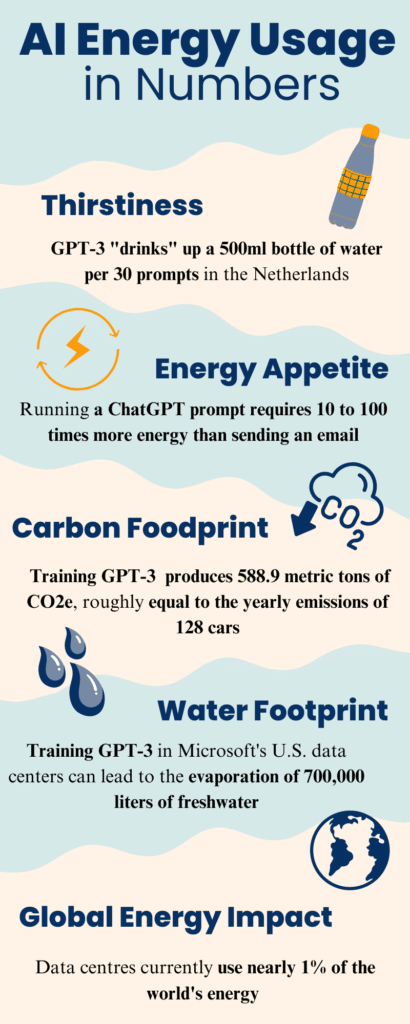
The information tabled on this guide is informed by the Australian Framework for Generative AI in School, summarised below.


Source: Tije, M. (2024). AI Environmental Impact: Understanding the Energy and Water Footprints of AI Models. Tilburg University. Retrieved May 20, 2025 from https://tilburg.ai/2024/09/ai-environmental-impact
Aside from the legality of student's using Generative AI due to age restrictions, teachers' are concerned that students' criticial and creative thinking pocessses will not be developed in this purely content-based transanction process. Further, the use of this abridged and possibly inaccurate content may be relied in the process of flawed knowledge creation, and presented without proper acknowledgement. In addtion, for some tasks, machine generated content lacks the depth of authentic human experience and individuality of thought required.
The "terms of service" for some AI tools set age requirement. For example, for ChatGPT and DALL-E:
However, many generative AI sites, including ChatGPT, don’t ask for proof of age during registration. Whereas others require an email address or a Google or Microsoft account to register.